Bauhaus Weaving Opened the Door to More than Just a Workshop
In 1919 the Bauhaus opened its door under the Master of Form, Johannes Itten. The Bauhaus school and workshop was known to mix traditional techniques and industrial methods into the workings of each craft lessons available. Itten worked with Helene Borner, Master of Works, who overseen the craftsmanship details of the workshop and was the only female to work at the Bauhaus from the day it opened to the day it closed its doors. Included in leadership was George Muche, Head of Workshop (1921-1927), who focused more on the industrial techniques, all while keeping inventory pumping and increasing profits coming into the workshops.
The Bauhaus weaving workshop was the primary source of learning. That said, 1920 brought in a women’s only textile class, starting what would become a stepping stone in history to women working in a predominantly “male industry”. These women soon expanded their experience by learning such crafts as crochet, macrame, spinning, embroidery, applique, painting and spraying techniques to incorporate into textile trades. These ambitious women determined to make a name for their gender in this field would take what they learned from men like Johannes Itten, Paul Klee, and Wassily Kandinsky, and incorporate it into color concepts and weaving forms to create a nuance of feminism into a “man’s world”.
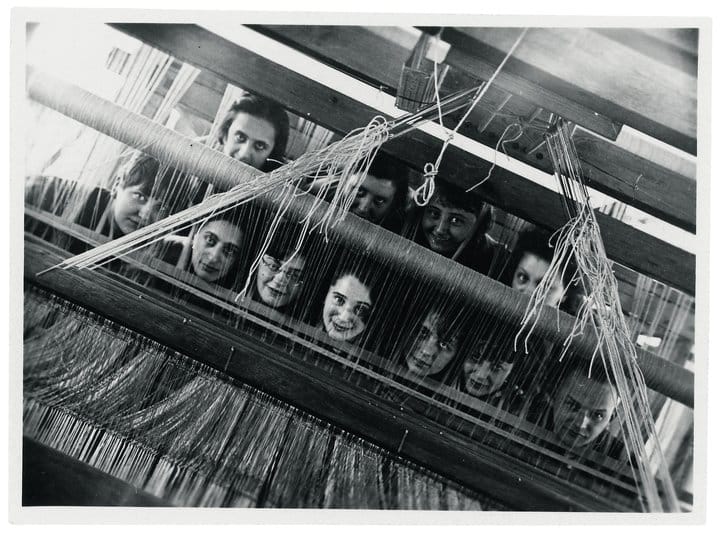
Women of the Bauhaus Weaving Workshop
The Bauhaus Weaving Workshop and The Women Who Kept The Legacy Alive
Although the women of Bauhaus weaving workshops took the initiative and learned all they could, not all of them pursued greatness into their future, or at least not that has been told throughout history. Some taught themselves new techniques and skills such as dyeing, and some even followed Helene and became leaders in and out of the workshop, but they still did not get the recognition they truly deserve. Success for a woman in a man’s world was not easy, due to the still very segregated beliefs that flooded the 20’s and women in education, let alone leadership roles.
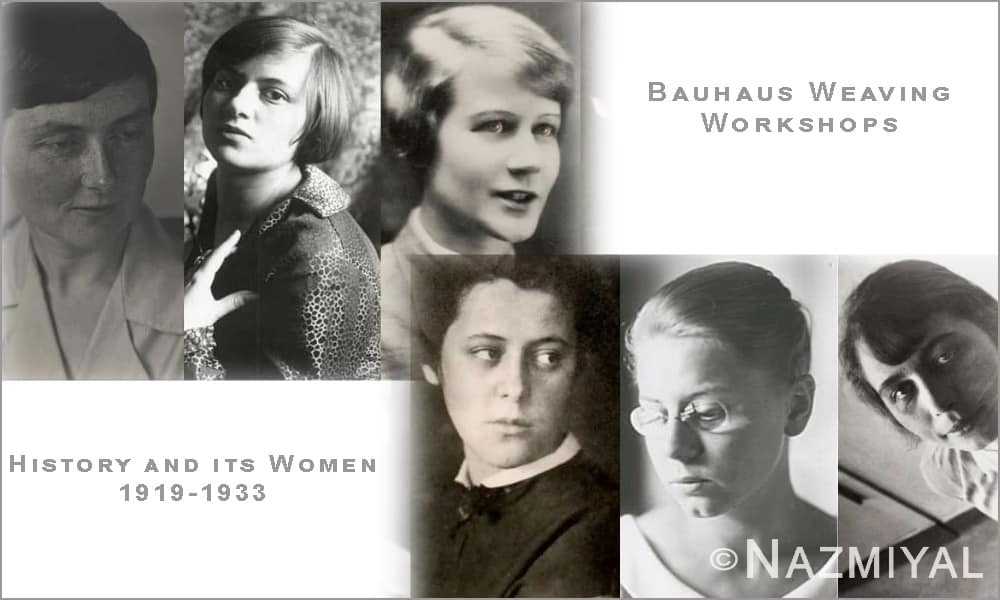
Bauhaus Weaving and The Women Of Bauhaus Textile Workshops
Even Walter Gropus, founder of Bauhaus, believed women thought in a more 2-dimensional process and could not construct in 3D as men could. He encouraged women who came to the workshops to leave crafts such as painting, carving, and architecture to the men. Today, 2019 marks 100 years since the opening of the Bauhaus and so much more recognition is given to the women’s accomplishments represented by scholarships and exhibitions. The following 10 women recognized below are just some of the contributors to the success of the Bauhaus and what may have been a memorable step to women’s climb in the workforce today.
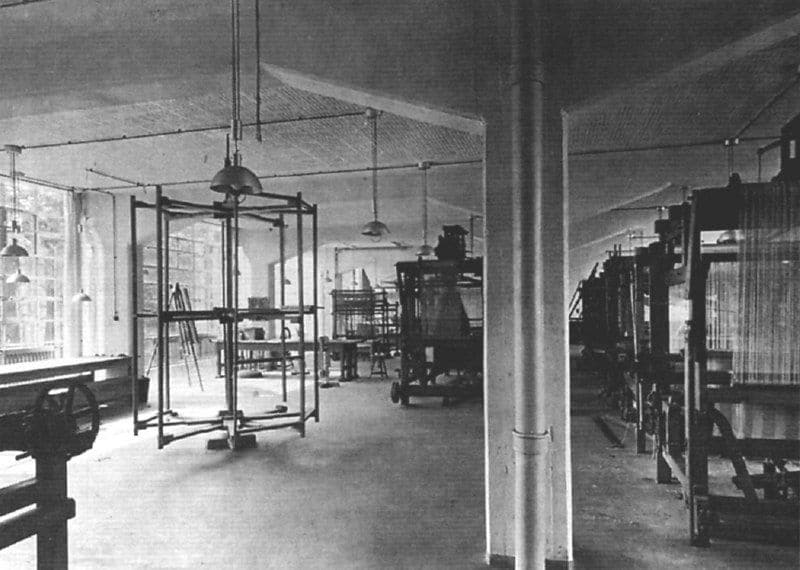
The Bauhaus Weaving Workshop
Iconic Women Of The Bauhaus Weaving Workshop
Anni Albers (1899-1994)
Growing up in Berlin, Anni Albers started her passion for art and crafts in a school in Hamburg and arrived at the Bauhaus hoping to improve her painting skills. She studied the brushstroke and line mastery of Paul Klee, but ended up applying her talents in the weaving workshop instead of painting and soon became Master of the Loom. She quickly learned to incorporate what she knew about painting into weaving, giving her first successful tapestries the geometric abstraction artists enjoy today. Not satisfied with just painting and weaving, Anni also created fabrics and crafted her own cotton/cellophane curtain to absorb and reflect light simultaneously, and was awarded a solo exhibit at the Museum of Art in New York; a first for women in that era! One year after that in 1931, she became one of the first women to assume a leadership role at the Bauhaus. As time rolled on, she migrated to the US and continued teaching at the Black Mountain College in North Carolina. She was famed for the fabrics she created.
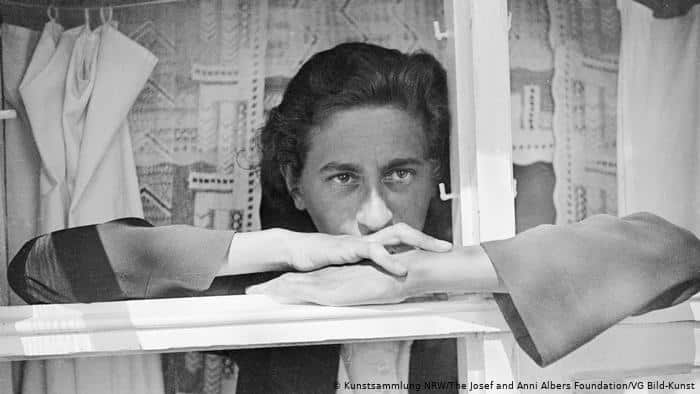
Anni Albers
Marianne Brandt (1893-1983)
When Marianne arrived at the Bauhaus, the leader of a metal workshop, Laszlo Moholy-Nagy, was so impressed by her earlier work, he made sure to open a spot in his shop for just her, even though this craft had barred women from entering in the past. This paved the way for Brandt to fully explore this male-dominated corner of trade; she eventually took Laszlo’s place to lead the workshop and teach the men who once thought her not qualified to even learn this trade. Marianne took advantage of this appointed position and created iconic works that are, today, on showcase at the MET and British Museum, among other places. In 1929, Marianne left the Bauhaus to work for the Ruppelwerk Metallwarenfabrik GmbH metalware company, becoming the director of the design department. Her life before arriving at the Bauhaus was ambitious, but by the time of her death in 1983, she had become one of Germany’s widely known and celebrated industrial designers.
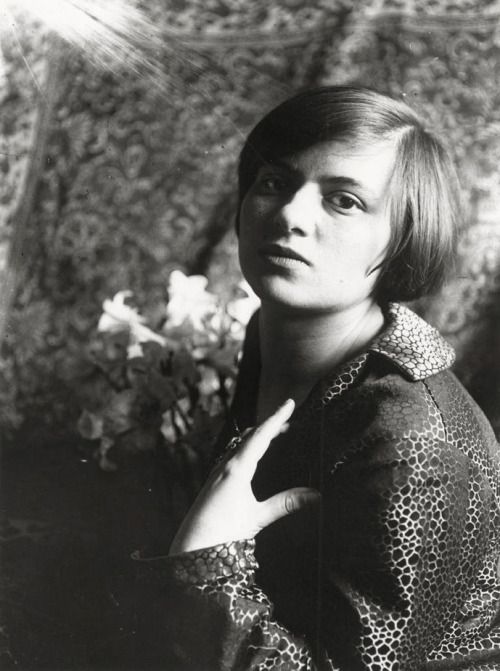
Marianne Brandt
Gertrud Arndt (1903-2000)
Gertrud was another successful woman of many trade talents. In 1923 she started her journey with a dream to create architecture but had to switch focuses when she arrived at the Bauhaus, realizing no classes were available. Switching gears to what was available, she got into the weaving workshop and created beautifully crafted rugs full of geometric patterns, one of which was picked up and laid upon the founder’s own office floor to admire.
From there, Gertrud switched gears to photography, making this her claim to fame and getting her name known in the modern and contemporary world of art. Still dreaming of the architecture life, she incorporated this into her self taught lessons of photography by using her husband’s construction sites and buildings as primary subjects of her camera. What really shaped her legacy for photography though was her batch of self-portraits, specifically a series titled “Mask Portraits”. This particular series is said to be the vision of inspiration for women of her era and later to create and follow their own photography passion. To say she led a full and variety-filled life before her passing in 2000 would barely scratch the surface of her accomplishments.
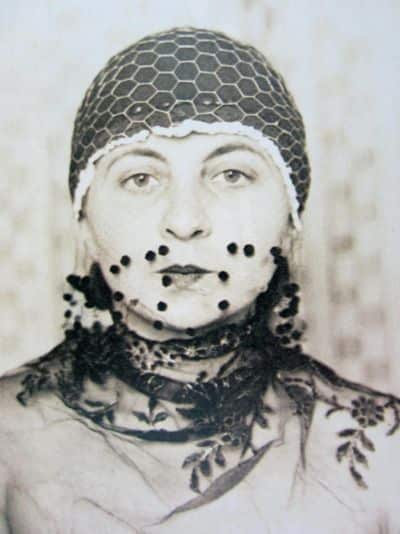
Gertrud Arndt
Gunta Stölzl (1897-1983)
Gunta Stölzl was confident as well as driven when she arrived at the Bauhaus in 1919. Being one of the earliest students to arrive, she soon became head of the weaving workshop from 1926 to 1931. Her weaving creations were born in the form of colorful patchwork and shapes that decorated rugs, chair covers, and wall tapestries. Stölzl wasn’t always a weaver; she started her journey by writing diary entries, creating what she would later become known as- a lead designer of her era. She once wrote, “Nothing hinders me in my outward life, I can shape it as I will” and live it she did.
Later in life, she became an established business owner, opening S-P-H Stoffe in Zurich with her husband and former Bauhaus peer. She brought her weaving expertise to life selling by designing textiles and selling area rugs through this business until 1967.
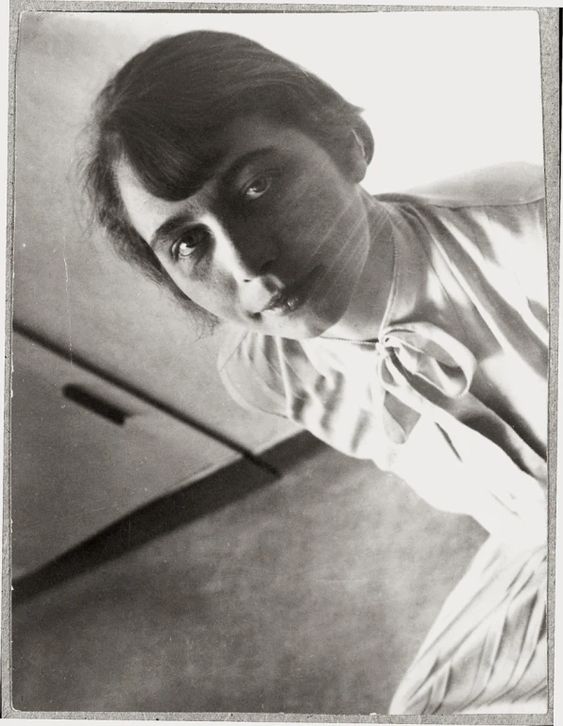
Gunta Stolzl
Benita Koch-Otte (1892-1976)
Benita was destined to be a leader. Prior to reaching the Bauhaus, she was a teacher to girls for 5 years in a secondary school, specializing in drawing and handicraft arts. Teaming up with painter and weaver Gunta Stolzl, she used her experience in textiles to create new abstract visions with new approaches to design. While studying at the Bauhaus, she included classes at the Dyeing Technical School along with the Textile Technical School and married Heinrich Koch, the photography department director at the Bauhaus in 1929. Born in Poland, she left her legacy in Germany as a teacher and director of a textile mill until her death in 1976. Her fabrics live on even today.

Benita Koch-Otte
Otti Berger (1898-1944)
Creativity could have been Otti’s middle name, although not likely, it would have definitely suited her style as she brought in a more conceptual outlook in her teachings than most others at the Bauhaus. She put that creativity to work in 1932 as she claimed the title of the head of the weaving department as Gunta stepped down and pursued other ventures. This was accomplished by completely revamping the class curriculum to better match her expressive views. Eventually, she set off to her own business by opening a studio in Berlin. Prior to her death in 1944, she attempted to legally come to the United States, but her entry was ultimately delayed and she was arrested before she could make the move. Sent to Poland instead, her career ended, but not her works. Her talents live on through the fabrics still displayed places such as the MET and Art of Institute of Chicago, so even though she never made it to the USA, her work certainly did.

Otti Berger
Ilse Fehling (1896-1982)
Ilse created beautiful sculptures and theater designs throughout her life in and out of the Bauhaus. During her stay between 1920 and 1923 at the workshops, she studied the works of painter Paul Klee and sculptor Oskar Schlemmer, learning all she could. This was awarded a patent winning device- a rotating round stage for stick puppets. By connecting objects from sculptor and theater, Ilse was able to successfully start her own freelance practice and continue the creation in both crafts. She was responsible for costume designs, stage props, and sculptors. Even though her sculptors provided an opportunity for a solo show at the Fritz Gurlitt Galley in 1927, she still struggled to earn true recognition, as her work was labeled “degenerate” within the Roman community. She may have been ahead of her time with her stone and metal creations, but she never gave up and continued creating up to her death in 1982.
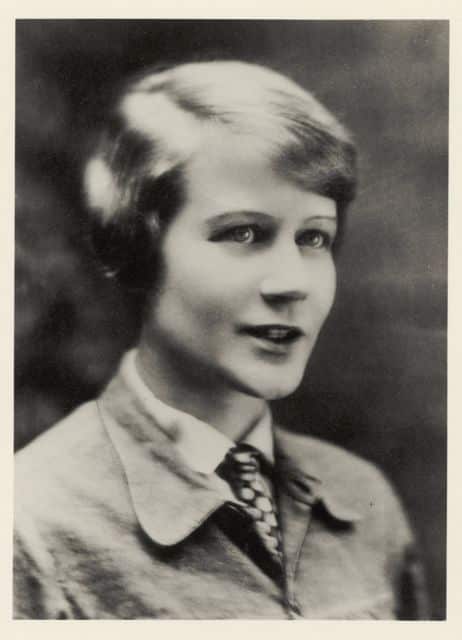
Ilse Fehling
Alma Siedhoff-Buscher (1899-1944)
This brave and determined woman took a completely different stride in the world she learned in. She reached the Bauhaus and started weaving, but swiftly converted to wood-sculpture. Very quickly into this male dominated trade, Alma began incorporating her weaving skills, wood crafting, and the touch only a woman could provide, into what would become her legacy. Her focus was on toys and games for children of all ages that would provide an opportunity for each to adapt and change, just like her creations. Inventions included white, washable furniture, puppet theater that transformed into a bookshelf, and a changing table that grew into a desk as the child aged. In addition, she is most known for a small ship-building game, which is still in production today. The intent of the game was to construct the shape of a boat using 22 blocks made of different colors and shapes but also allowed creativity to flow and new objects to be made.
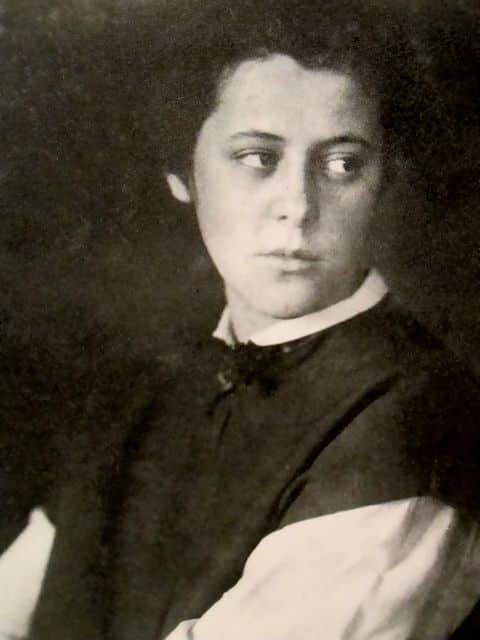
Alma Siedhoff Buscher
Margarete Heymann (1899-1990)
Hardheaded and determined to succeed in her craft, Margarete convinced Gropius to open a place for her in ceramics so she did not have to waste her time in weaving. At the early age of 21, she arrived and immediately began fusing colorful glazes and new angles for her ceramic designs. She had the determination to favor her skill, but her hardheadedness caused her to leave the Bauhaus after only 1 year in attendance. Marrying Hael-Werkstatten, they worked together and opened their own workshop to produce her designs independently.
Her designs rocketed off the shelves in Europe, Great Britain and the US until she was forced out of business in 1934. Living in a decade not accustomed to allowing women success in a male world, Heymann and her husband fled to England and opened what would be Greta Pottery, and spent the following years painting.
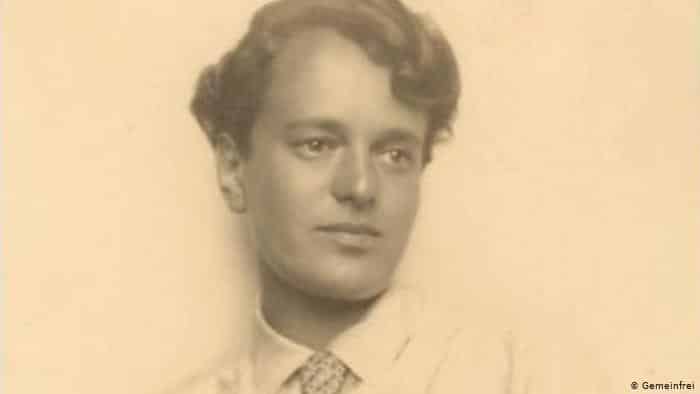
Margarete Heymann
Lou Scheper-Berkenkamp (1901-1976)
Color was the passion of choice for this woman. Bright, contracting, mixing of colors is something Lou tried to incorporate into everything she did. She worked with a small group of women at the workshop to create a mural on the wall of the school’s workshop room. Following her love for spreading color everywhere, she married Hinnerk Scheper, a classmate at the Bauhaus, and they coated Moscow with new and exotic color schemes across the Russian capital. These two lovers, of art and each other, established the Advisory Centre of Colour in Architecture and the Cityscape and continued their passionate work even after Hinnerk’s death. In the midst of all her adventures, Lou spent time as a free lance painter and managed to publish many children’s books such as “The Stories of Jan and Jon and their Pilot Fish” (1947). Her work can still be admired at Berlin’s Hans Scharuon’s Philharmonie building, the Egyptian Museum, and the Berlin Tegel airport.
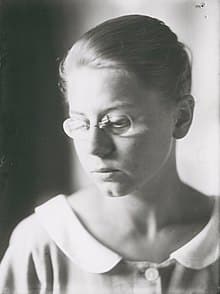
Lou Scheper Berkenkamp
The Bauhaus Weaving Workshop sadly closed its doors in 1933, but will forever live on in the works of its creators. Sculptures, fabrics, paintings and more can be found around the world and these women will be remembered and appreciated today for the work they did then. The women portrayed above are only a handful of the amazing talents to come out of the Bauhaus, but with the recognition of a few can become the knowledge of many.

Anni Albers Weaving at Bauhaus
This art blog about the women of the Bauhaus weaving workshops was published by Nazmiyal Antique Rug Gallery in New York City.



